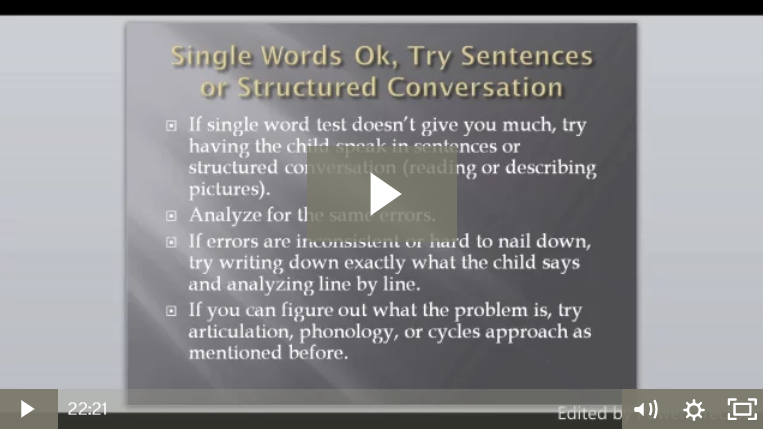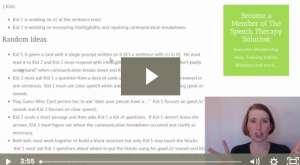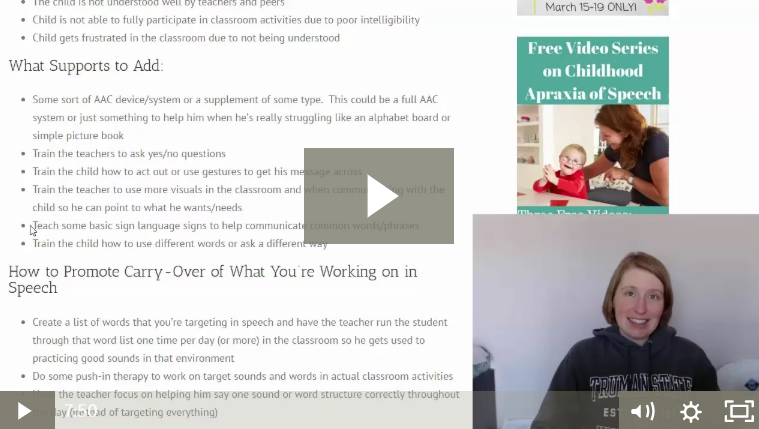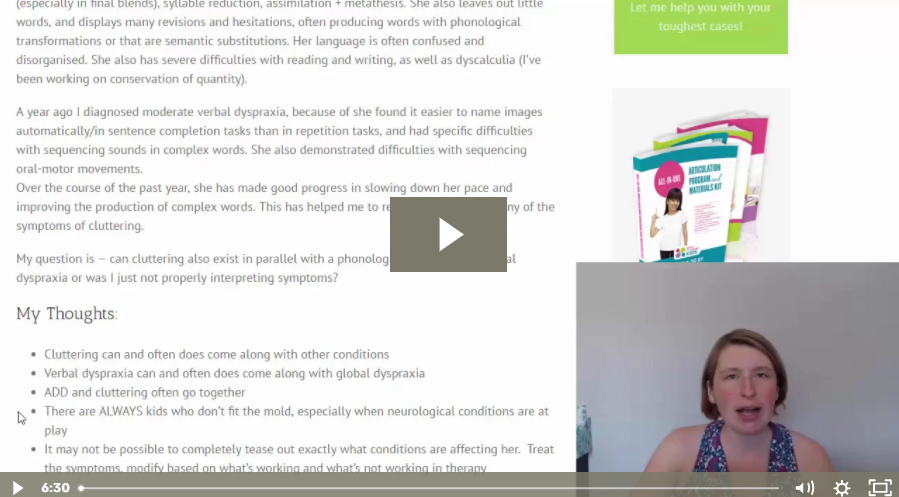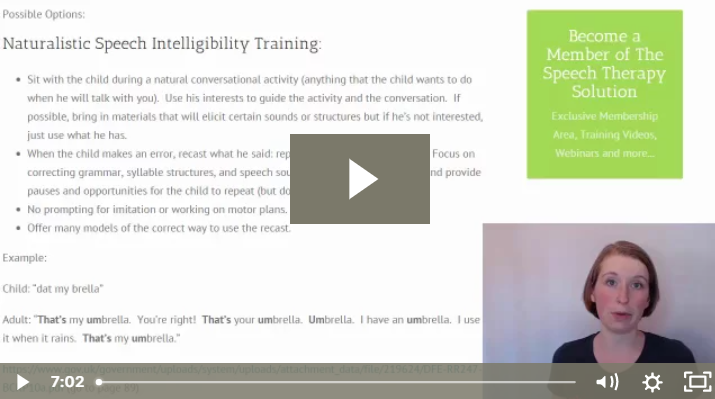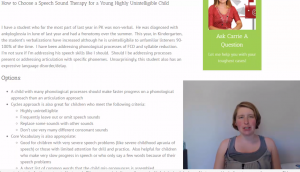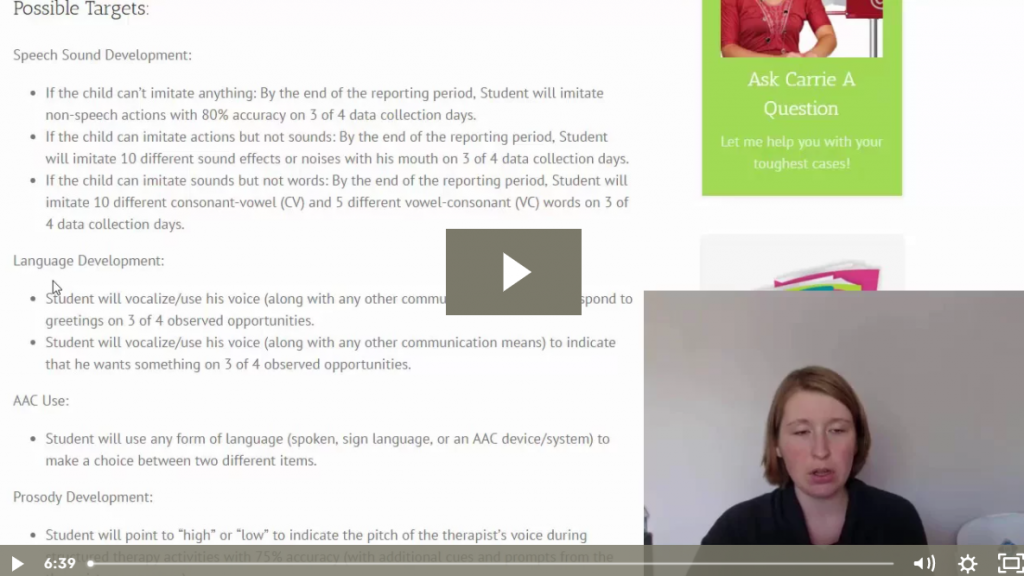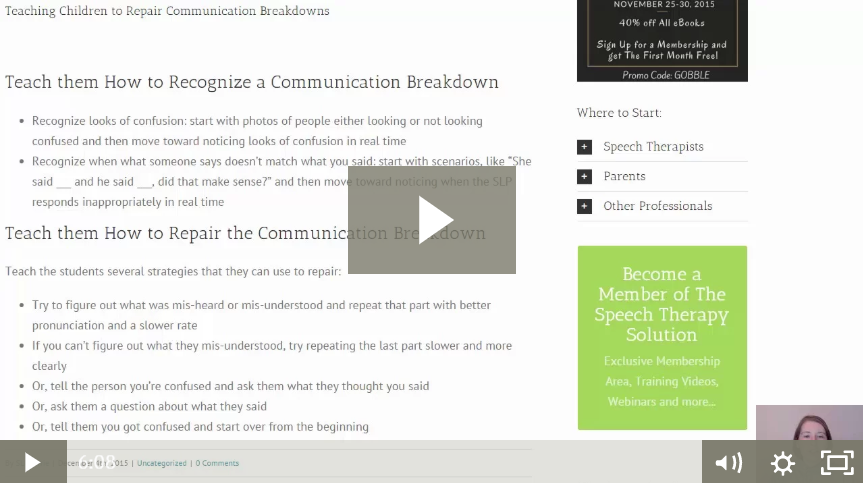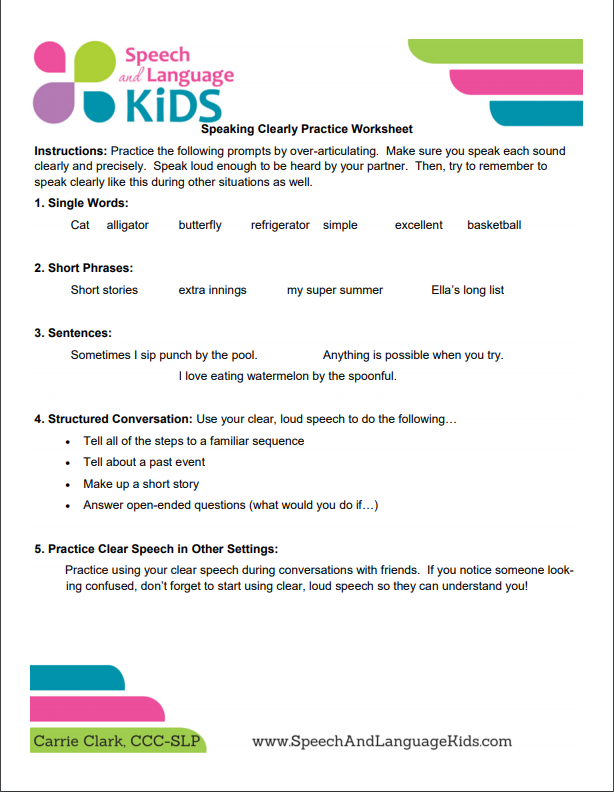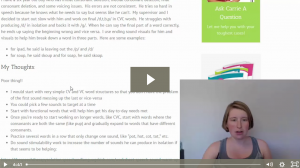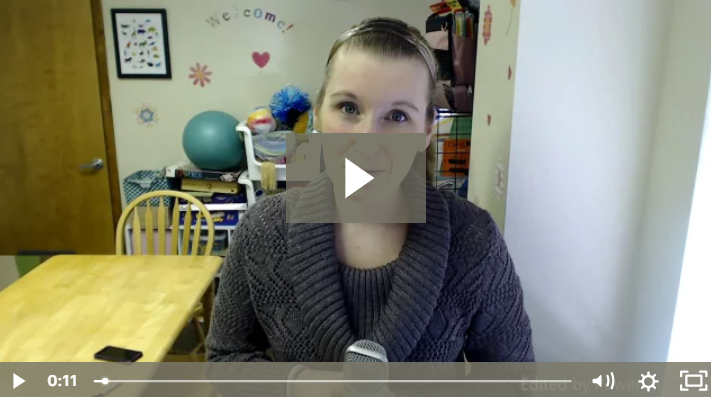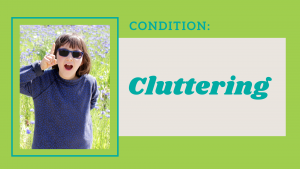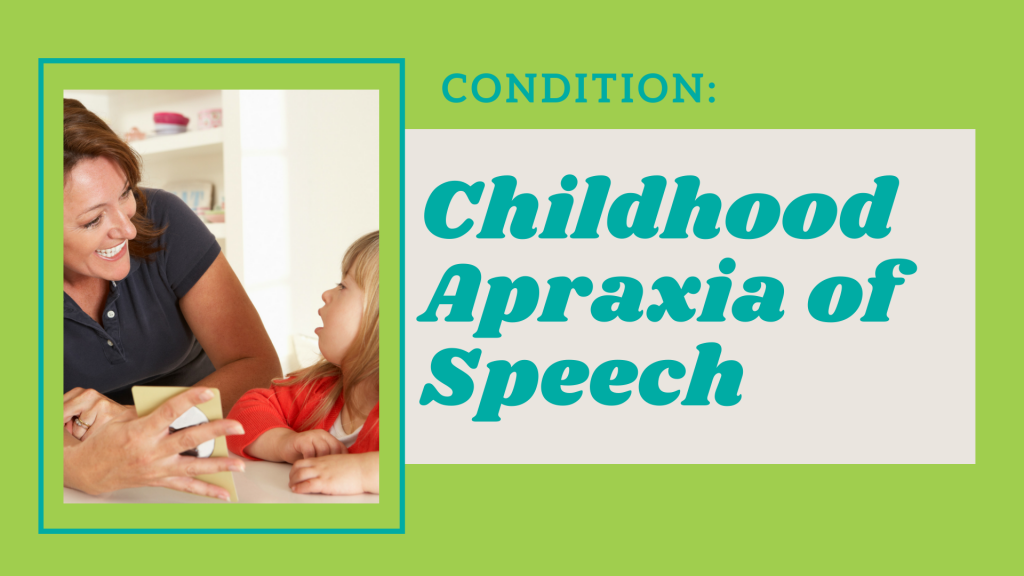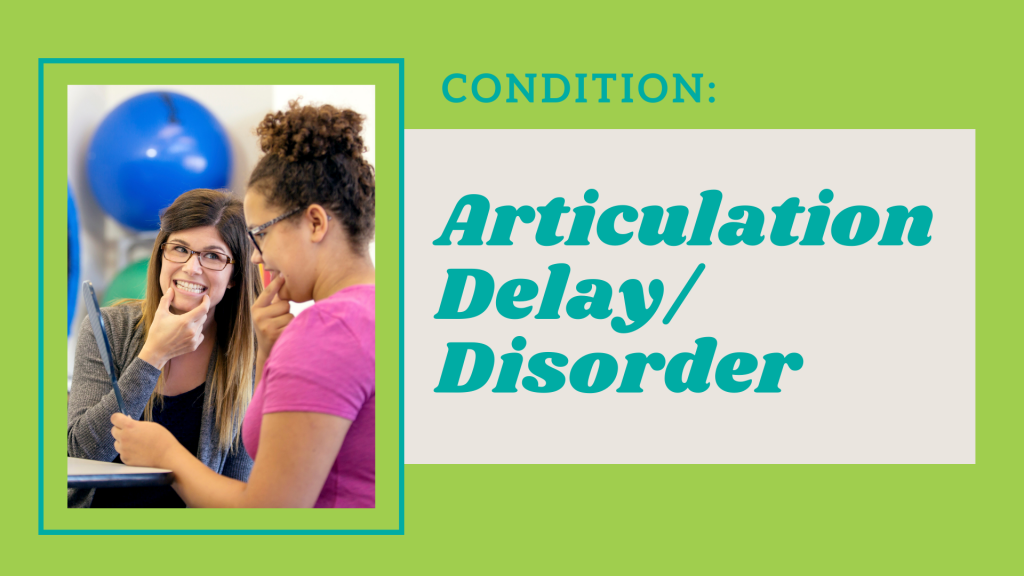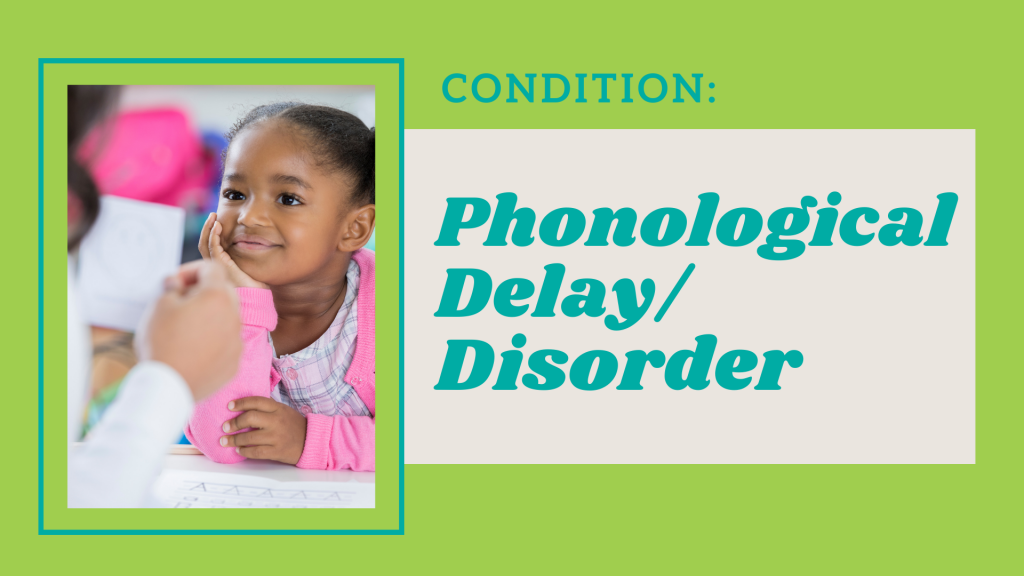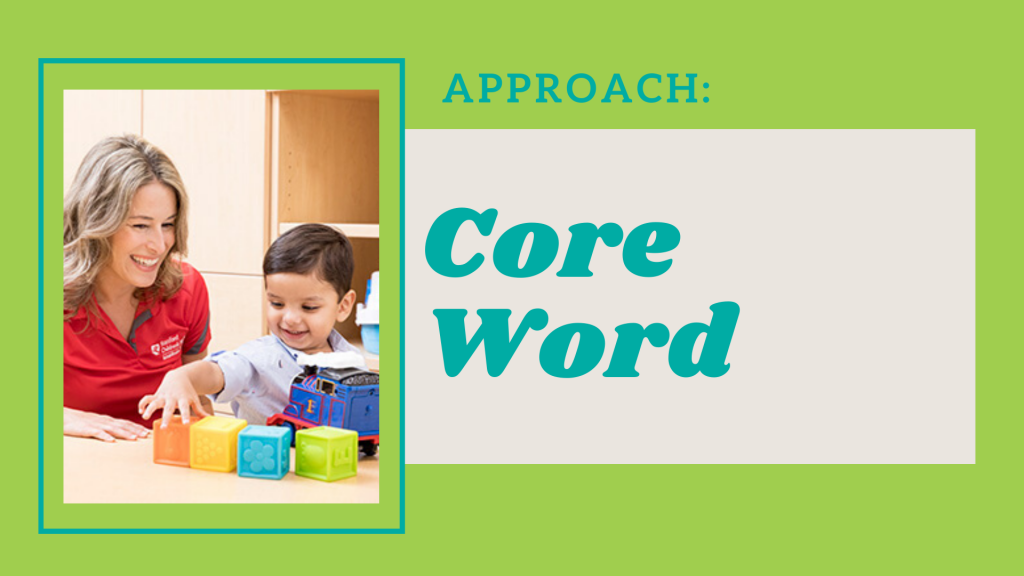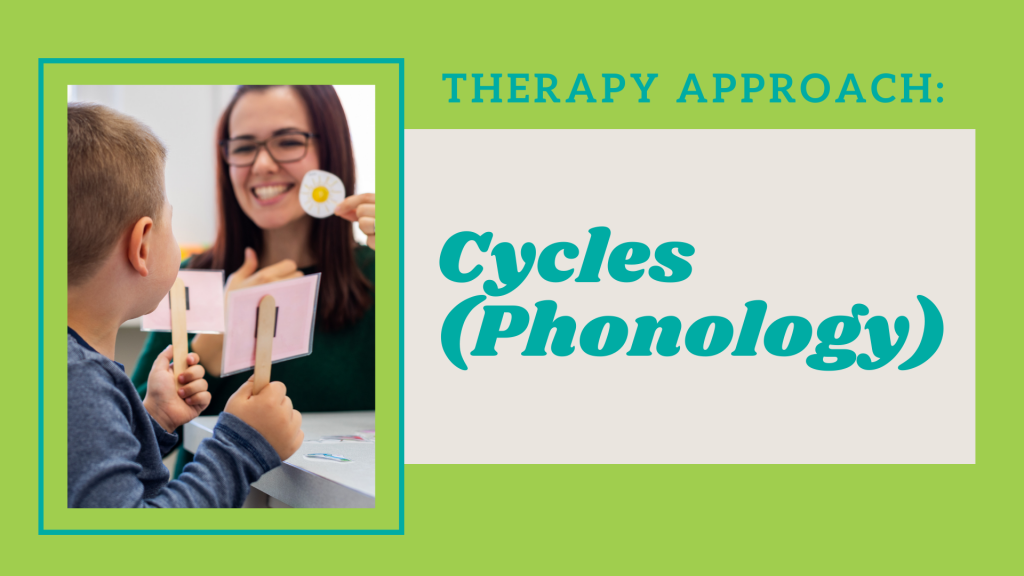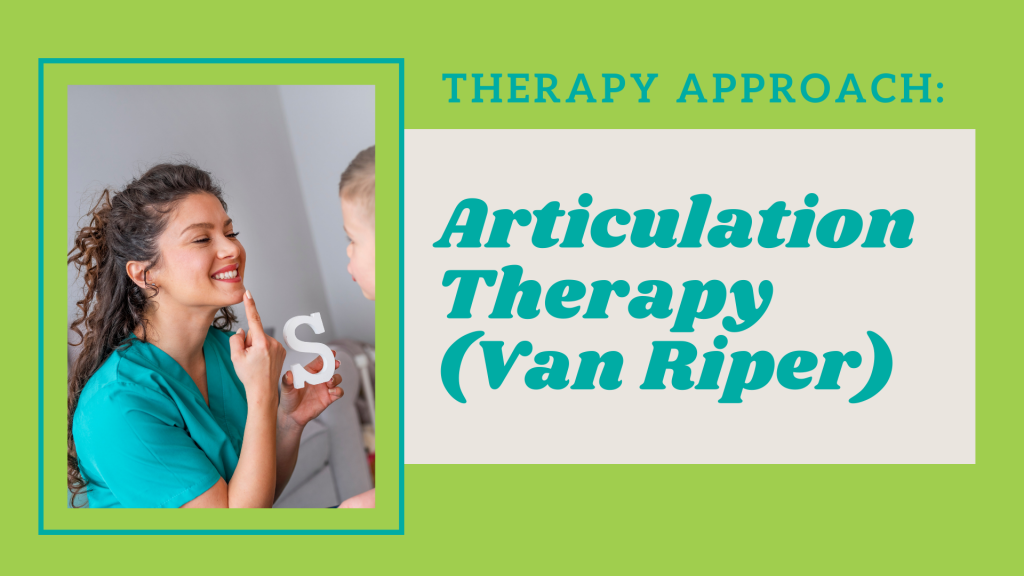Condition: Low Intelligibility (Client's Speech is Difficult to Understand)
Jump To:
Norms by Age Evaluation Suggested Goals Therapy
Definition:
Intelligibility refers to how well a child’s speech can be understood by others. Many things can affect intelligibility, include the child’s language and grammatical skills, their speech sound production, their volume and prosody, etc. The following resources will help you work with a child who has low intelligibility, or who is not easy to understand.
Developmental Norms:
Like many areas of our profession, there is varying research on how intelligible a child should be by age. Here are a few of the more well-cited references for intelligibility:
Bowen, C. (2011). Table1: Intelligibility. Retrieved from http://www.speech-language-therapy.com/
Table 1a: How well words can be understood by parents, Lynch et al., 1980 (cited in Bowen, 1998)
- By 18 months a child’s speech is normally 25% intelligible
- By 24 months a child’s speech is normally 50 -75% intelligible
- By 36 months a child’s speech is normally 75-100% intelligible
Flipsen Jr. (2006). Unfamiliar Listeners. Retrieved from http://www.speech-language-therapy.com/
Flipsen Jr. (2006) wrote, “Currently the only reliable data on the conversational intelligibility of children that appear to exist reflect parent report estimates (Coplan & Gleason, 1988), and these have yet to be validated against more objective measures.” Nonetheless, some SLPs/SLTs use the Coplan and Gleason “formula” as a guide to the expected conversational intelligibility levels of preschoolers talking to unfamiliar listeners, or “strangers”. This is it:
AGE IN YEARS / 4 x 100 = % UNDERSTOOD BY STRANGERS
Child aged 1;0 = 1/4 or 25% intelligible to strangers
Child aged 2;0 = 2/4 or 50% intelligible to strangers
Child aged 3;0 = 3/4 or 75% intelligible to strangers
Child aged 4;0 = 4/4 or 100% intelligible to strangers
Pascoe (2005) was in general agreement, and said, “By three years of age, a child’s spontaneous speech should be at least 50% intelligible to unfamiliar adults”… “By four years of age, a child’s spontaneous speech should be intelligible to unfamiliar adults, even though some articulation and phonological differences are likely to be present.”
Gordon-Brannan & Hodson (2000). The 66% Rule. Retrieved from http://www.speech-language-therapy.com/
Gordon-Brannan & Hodson (2000) determined that children above the age of 4;0 with speech intelligibility score below 66% should be considered as candidates for intervention. What this means is that if fewer than 2/3 of the utterances of a child aged 4;0 in conversation with an unfamiliar listener can be understood by that listener, then intervention is indicated. Unfamiliar listeners should be able to understand at least 66% of what a child of 4;0 says.
Evaluation:
Children with very low intelligibility benefit from a full speech and language evaluation to determine what specific issue is causing the speech to be unintelligible. For many children with this condition, it may be difficult to determine the etiology or cause of the impaired speech sound production but your evaluation should at least tell you whether intelligibility is being impacted by language, speech, social skills, or some combination of all of them.
Here are some resources that will help you with various aspects of evaluating this condition:
Suggested Goals:
The results of the assessment process should help guide what you will target in therapy. Here are some goals that may be helpful for this condition. You can click on one of the goals below to learn more. Or, scroll down to the therapy section for more in-depth resources and support for treating this condition.
Therapy:
Here are some more resources and information that may help you when it comes to treating this condition.
Related Topics:
Didn’t Find What You’re Looking For?
We’re constantly working on adding new features and topics to this membership site. If you don’t find what you’re looking for by using the search bar at the top of the page, please use the button below to request new features or topics to be added!

